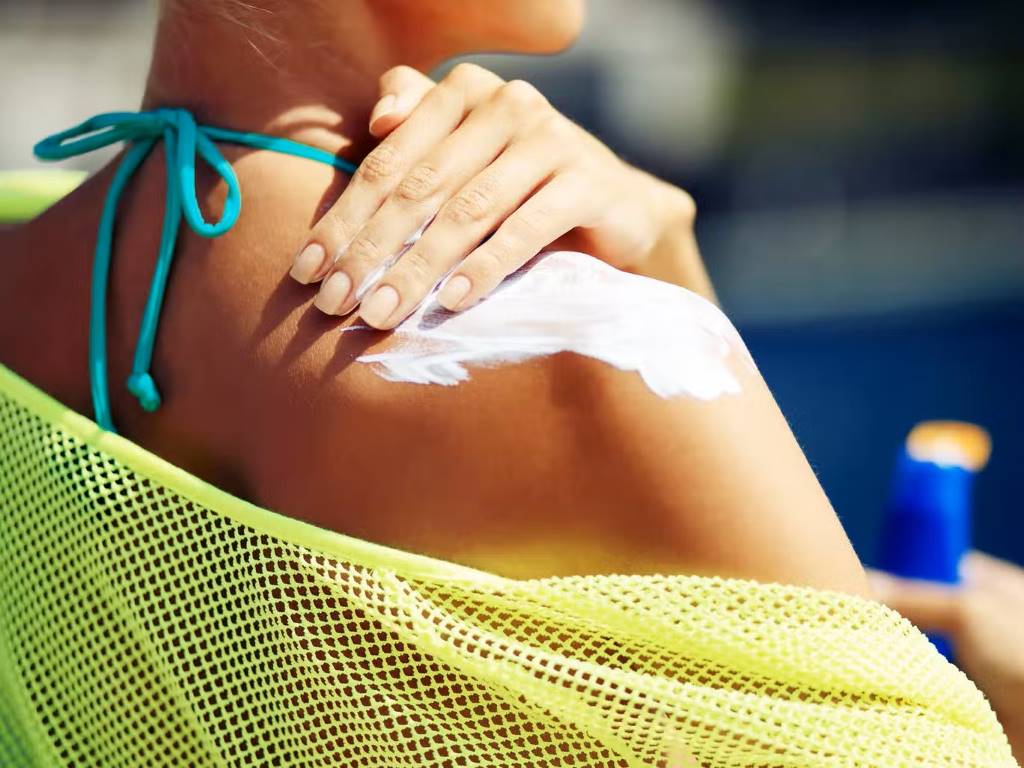According to the World Health Organization, sunlight has many benefits. It provides essential vitamin D, improves circulation and boosts metabolism. However, it also contains ultraviolet (UV) rays that can cause skin damage such as premature aging, hyperpigmentation, and even cancer. Year round, your skin needs to be protected with sunscreen when you are out and about.
How does sunscreen work?
Sunscreen helps protect your skin by absorbing and reflecting ultraviolet rays from the sun. All sunscreens have a Sun Protection Factor (SPF) that indicates how long the sunscreen will remain effective on your skin.
You can determine how long a sunscreen will last by multiplying the SPF factor by the length of time you’ve been sunburned without sunscreen. For example, if you normally get a sunburn in 10 minutes without sunscreen, a sunscreen with SPF 15 will protect you for 150 minutes – you multiply 10 minutes by SPF 15.
Although sunscreen helps to reduce damage, no sunscreen completely blocks all wavelengths of UV rays. These include UVA (ultraviolet A, a light with longer wavelengths than UV rays) and UVB (ultraviolet B, light of medium or stronger wavelengths).
The American Academy of Dermatology (AAD) recommends that a “broad spectrum” sunscreen (meaning it protects against UVA and UVB rays with an SPF of at least 15) be applied daily on all sun-exposed areas, and then reapplied every two hours.
Why should you wear sunscreen on cloudy days?
Up to 80 per cent of the sun’s rays can penetrate clouds, so if you think you can afford to skip skin protection on a cloudy day, think again. Sunscreen is an important wellness habit that needs to be maintained all year long, even in the winter months. This is because UV rays are higher at higher altitudes. With every 1000 meter elevation gain, the UV index will increase by about 10%. Snow can also magnify the power of UV rays. White snow will reflect the sun’s rays and can double your UV exposure. The UV Index will probably be a bit lower in winter, but when doubled, it can be on par with summer levels.
Reduce the risk of skin cancer. Ultraviolet rays from the sun can lead to dangerous skin diseases such as horn cell cancer, and melanoma. By wearing sunscreen every day, you can cut your risk of skin cancer in half.
Prevent premature skin aging. UV damage from the sun causes photoaging, with the degree of aging dependent on skin color and duration of exposure. UV rays also break down collagen, which contributes to fine lines, sagging, and wrinkles. Studies show that people under 55 who apply sunscreen regularly have a 24 per cent less chance of developing these signs of aging than those who don’t.
The ‘5Ws and 1H rule’ for sunscreens
WHO: All people exposed to sunlight (whether direct or indirect).
WHAT: A broad-spectrum sunscreen with an SPF of 15 or higher. On days when you must be outdoors, use a sunscreen with an SPF of 30 or higher.
WHEN: Every day apply 30 minutes before going outdoors. Reapply every two hours.
WHERE: All areas of skin exposed to sunlight (whether direct or indirect).
HOW: Most adults need about 1 ounce, or enough to fill a shot glass, for full body coverage. If you have thin hair, apply sunscreen to your scalp or wear a wide-brimmed hat. To protect your lips, apply a lip balm with an SPF of at least 15.
WHY: To reduce the risk of skin damage and skin cancer.
While sunscreen plays an important role, no sunscreen completely blocks all UV rays. Wearing sun-protective clothing and avoiding sun exposure between 10 a.m. and 3 p.m. will also help protect your skin from overexposure and minimize sun damage.






